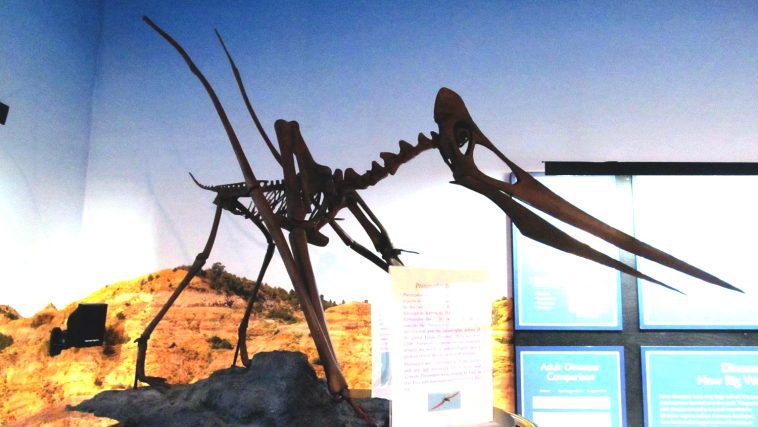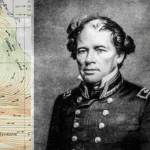[Originally published at Creation Engineering Concepts]
I have been interested in dinosaurs, marine reptiles, and flying reptiles since I was in grade school. One of my first books on these creatures was the kids’ book, All About Dinosaurs by Roy Chapman Andrews that I obtained in 1953.
Here are a few of the things that Andrews wrote about the Pteranodon back then:
Pteranodon (Ter-an’-o-don) of the Cretaceous period was the biggest of all the flying reptiles. He was a fantastic, goblin-like creature. I always think of him as a witch on a broomstick that sailed through the sky. He had a long beak, with no teeth, and a great triangular cap or crest…
Although the wings were more than 20 feet long, the body was very small. Probably Pteranodon did not weigh as much as a large turkey. The bones were hollow like those of a bird as they must have been light. Actually the bones were no thicker than a postcard. Therefore, they were smashed flat in most fossil skeletons and are difficult to put together.
While much of what Andrews wrote in his book has been updated due to new fossil evidence and new interpretations, his story quoted above would still be considered mostly valid today by a majority of pterosaur experts.
Pteranodon (toothless flier) is the best-known large pterosaur in the world. It was first discovered in America in Kansas by famous fossil hunter O.C. Marsh in 1876. Pteranodon fossils are usually crushed to pancake-like thicknesses due to their light construction. Creationists would also credit the catastrophic actions of the global flood at the time of Noah for the condition of the fossil material. There are over 1,100 Pteranodon specimens in museums around the world, so paleontologists have a good picture of the entire skeletal anatomy of the creature.
Pterosaurs are categorized as flying reptiles rather than dinosaurs, which are restricted to only describing non-flying land animals. Pterosaurs were created by God on Day Five of Creation Week, and dinosaurs were created on Day Six.
The model at the Dinosaur & Fossil Museum in Castle Rock is a scientific reconstruction of a female Pteranodon longiceps with a wingspan of about 12 feet. Males were larger than the females and have been found with wingspans approaching 30 feet. Males also had much larger head crests that projected back from their skulls, as so aptly described by Andrews in his book.
It is not known for sure if pterosaur flying was confined to just gliding or if they could also take off from the ground by running and/or flapping their wings.
Most scientists, whether secular or creationist, believe pterosaurs are extinct. However, there is evidence that there may still be some pterosaurs in existence in remote areas of the earth.
The jaws of many pterosaurs did have teeth, but since the Pteranodon beak was toothless, it is likely that it fed like a modern pelican by scooping up fish in its jaws and swallowing them whole.
Please consider visiting the Dinosaur & Fossil Museum at the Mount St. Helens Creation Center, where you can see up close the new skeletal model of Pteranodon, another example of God’s skillful engineering in a flying kind of creature.






